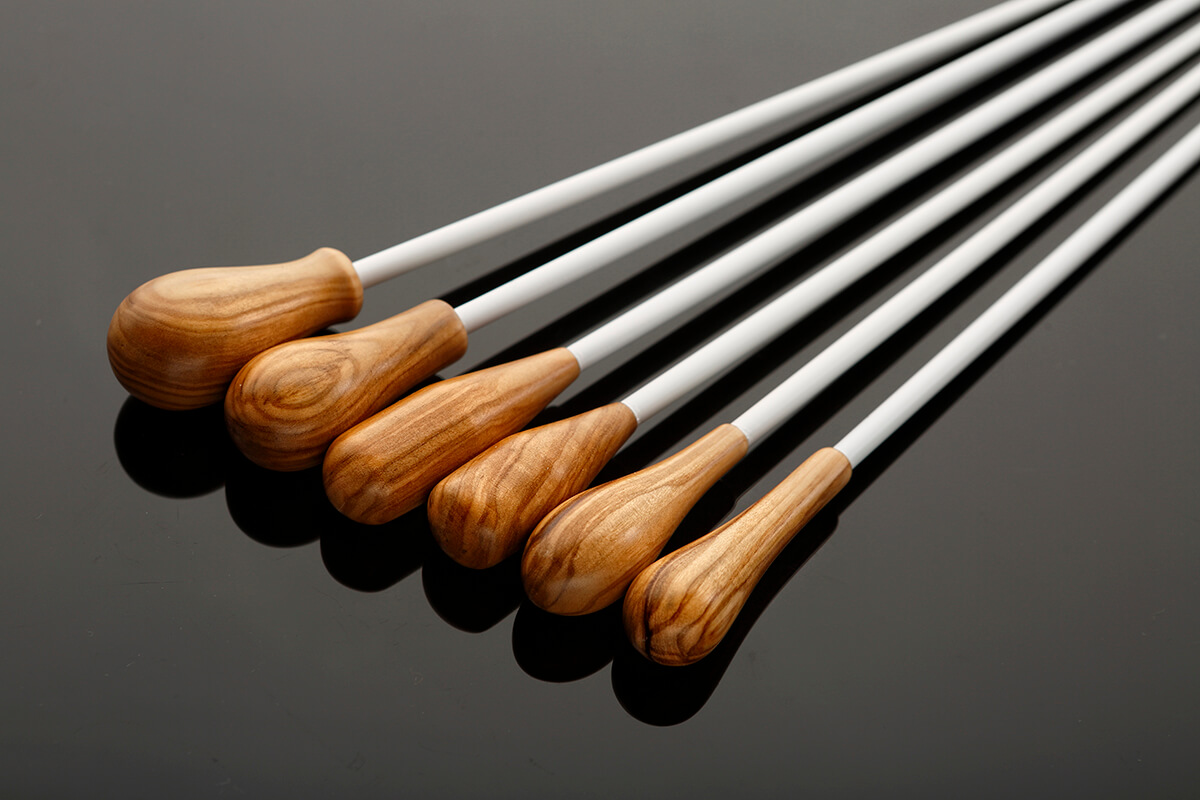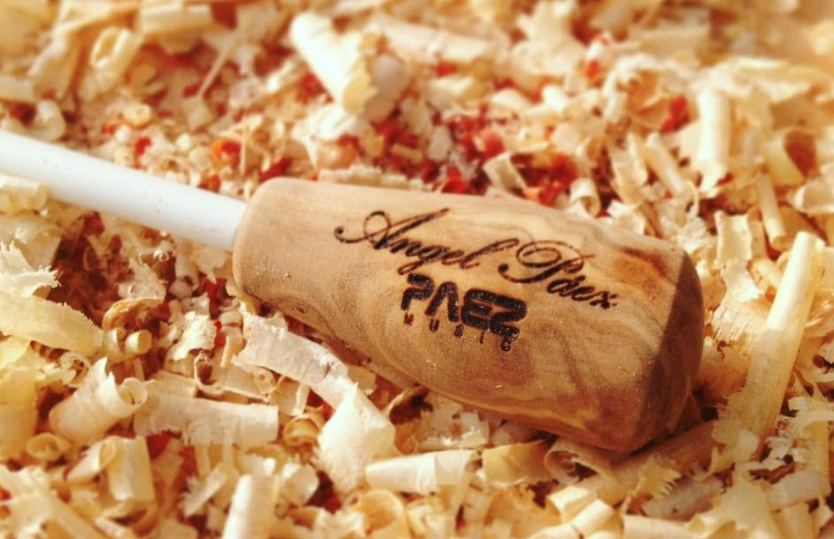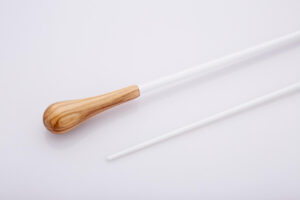A little history
Since its consolidation as a basic tool of musical direction at the beginning of the s. XIX, the baton has undergone an important evolutionary process in relation to its morphological appearance. The craftsmanship applied to this musical accessory in its beginnings, based on the use of valuable materials and exquisite goldwork details, has been replaced by lightness and balance in a constant ergonomic search that allows an optimal adaptation to the conductor’s hand. From its elaboration in the hands of a master craftsman as a unique and exclusive piece for each director, it has become a mass-produced product by large companies specialized in musical accessories, leading to the depersonalization of the piece. However, there are still luthiers who dedicate their work to the artisanal construction of these accessories, as is our case. At PAEZ MUSIC we carefully take care of each creation as an exclusive and irreplaceable piece that will accompany the musical director’s mastery throughout his musical life.









